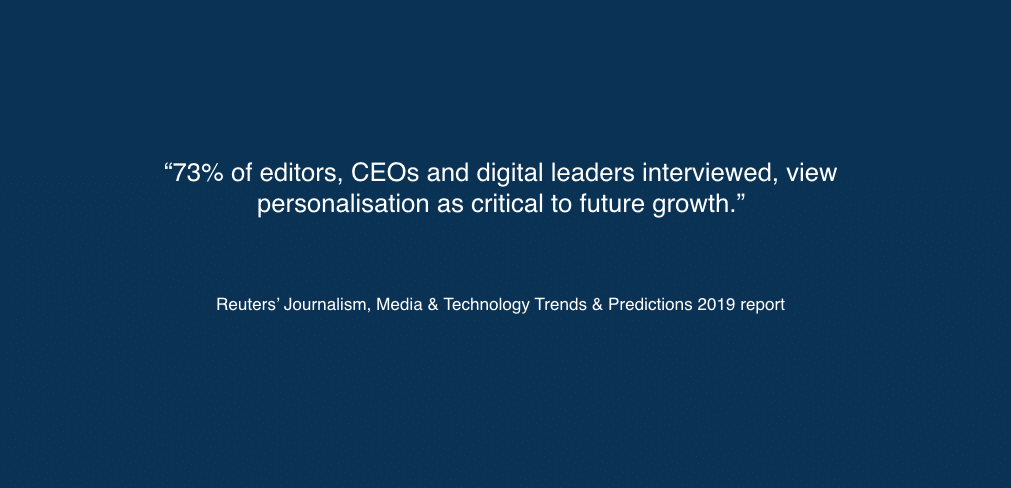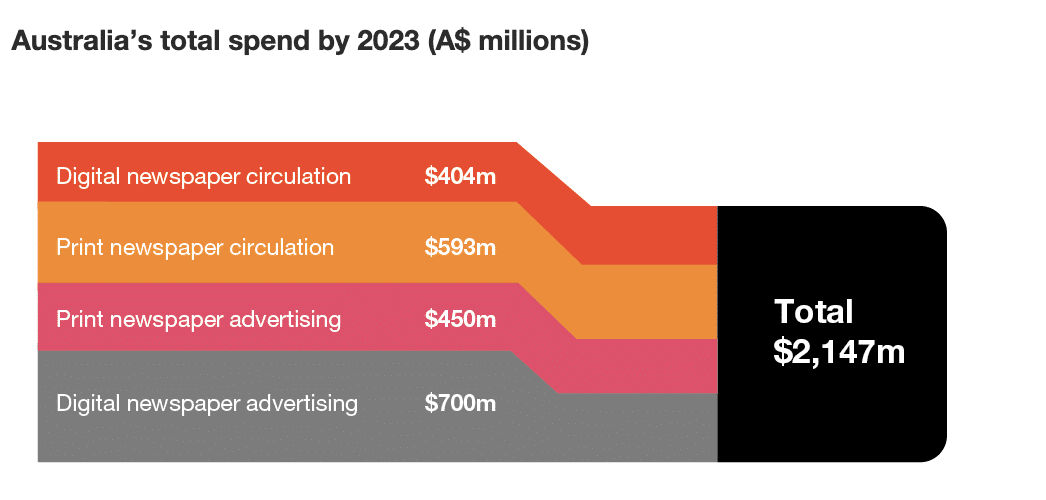
Three ways digital publishers can measure the success of personalising content
As more and more readers turn to online news and information sources, publishers have become more reliant online subscription revenue and advertising.
The challenge for digital publishers now is to:
- Attract site visitors
- Increase subscribers
- Maximise the time they spend on your site
- Ensure they visit again(and again).
One of the most significant ways to make a digital offering of your publication more than just a newspaper on the internet, is by leveraging technology to make the user’s experience more personalised.

What is personalised content?
At its most basic, personalised content involves giving site readers and visitors more of what they do want and less of what they don’t.
This includes your own editorial content in addition to the type of advertising featured.
The extent to which we can do this depends on the amount of information you have about your site visitors. Sometimes, for example, you’re only aware of what they’re doing on that specific visit to your site, or other websites visited during that session.
And then of course, you might have members or subscribers who have shared information with you when they first signed up, and / or whose behaviour you’ve been able to track for some time. In a completely non-creepy way of course 😉
Knowing what is of interest to your readers allows you to target your content and advertising to them. So upgrading or building a new website with personalisation in mind is important.
Simple content personalisation examples include:
- Filtering information or content to suit readers’ interests
- Changing the layout or structure of the page to bring relevant content or advertising to visitor’s attention
- Adapting websites or newsletters to reflect your readers’ locations.
It’s also important to remember however that personalisation – including the development of complex databases or collection of excessive amounts of information – just for the sake of it is an inefficient use of valuable resources.
Of course this means it’s important to measure the resources you’re willing to invest against their success.
Quantifying success isn’t easy because you don’t publish anything in isolation. It’s almost impossible to keep all other variables steady to measure the changes you might be making, but there are a few easy ways to examine if you’re making a difference.
3 factors to determine if your site’s personalisation is working
1. Bounce rates / time on site / pages visited
By targeting content to visitors’ interests, you’re aiming to keep them on the site as long as possible.
Personalising the information we publish online or in newsletters, means users will continue to read through your content because you’re highlighting material that’s relevant to them.
Improved engagement and personalisation then, should mean an increase in the number of pages visited, the length of time they spend on your site and a decrease in bounce rates.
It’s likely you’re already using an analytics tool (such as Google Analytics) so can monitor and measure changes to these metrics as you start personalising different elements of your site.
2. Unsubscribes and churn rates
If you’re giving readers more of what they want, your unsubscribe rate should decrease.
Someone unsubscribing means you’re not just losing them as a reader. You’re further prevented from enticing them back as you’ve now lost access to the information you need to personalise content to their needs in the future.
An unsubscribe percentage on its own is only an indication of a reader turning away. This data point doesn’t give you enough information on its own to understand why an individual is unsubscribing.
If you’re not already doing this, try redirecting unsubscribers to a survey. Ask why they’re unsubscribing and include options such as the relevance of content or advertising in addition to standard criteria such as the regularity of emails, for example.
You can compare the impact delivering more personalised newsletters has on your unsubscribe rate and reasons given in survey results. Bonus improvements should also be reflected in open and clickthrough rates.
3. Advertising return on investment
By knowing our readers, we can better target advertising to their location and their interests.

Native content is a considerable priority for advertisers and publishers. According to PwC Annual Online Advertising Expenditure Report (OAER), the Australian online advertising market hit $8.8b expenditure in calendar year 2018, an increase of 11.6 percent on 2017. In particular, display advertising is expected to increase by 17.7 percent between 2019 and 2023.
Delivering more targeted native advertising means publishers are able to both protect their inventory and deliver a better experience for readers and better results for advertisers.
The best KPI for measuring this success, is the ability to deliver lower impressions at a higher CPM and higher clickthrough rate. These are statistics any AdTech platform should already be recording.
Measuring the success of your personalisation efforts IS possible
Personalisation isn’t new. Publishers and advertisers have long been attempting to target content to readers’ interests.
The challenge now, as you are able to gather more information about our readers than ever before, is how you optimise your attempts at personalisation to achieve success in an efficient way.
Measuring the benefits resulting from changes to a user’s experience isn’t easy because digital publishing is a dynamic industry. Added to that is the difficulty of keeping other variables static while isolating and manipulating one or two.
As we’ve suggested however, online publishers are often collecting much of this information already, so many of the critical performance measures we’ve recommended are readily available along with baseline data.
While measuring the success of personalising your online content, isn’t easy, it’s certainly possible.
Of course it’s hard to justify not adopting even the most basic level of personalisation if your end goal is to increase site visitors or engagement. After all, you’re now giving readers more of what they do want and less of what they don’t.

